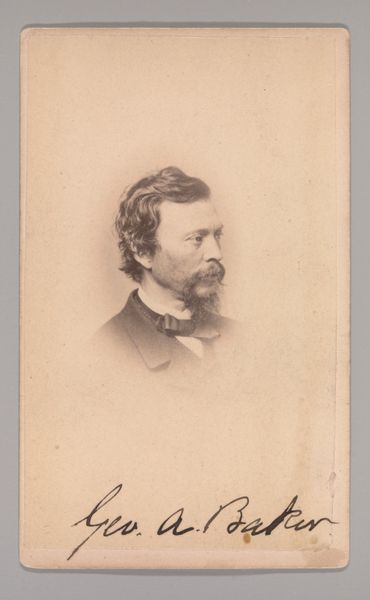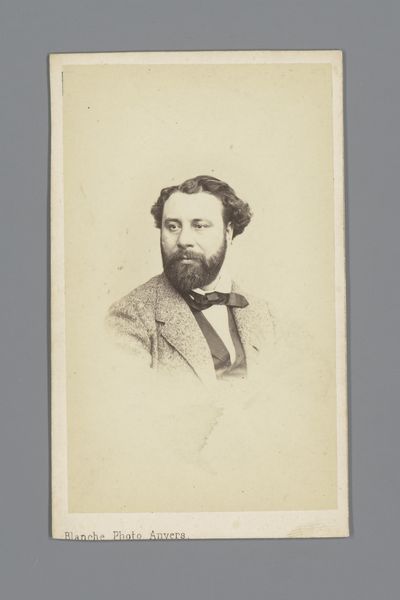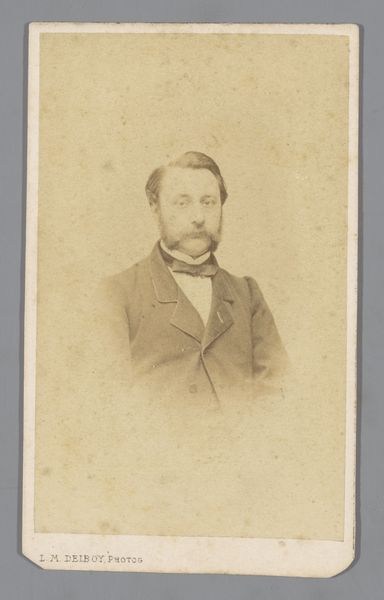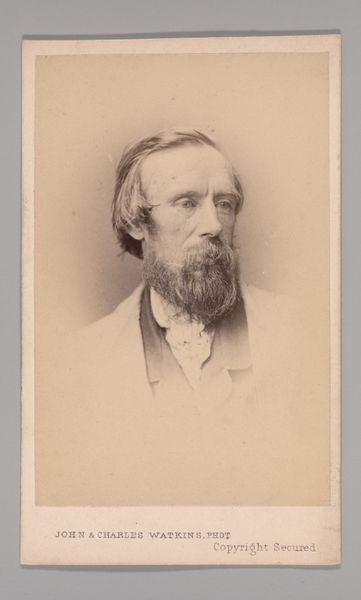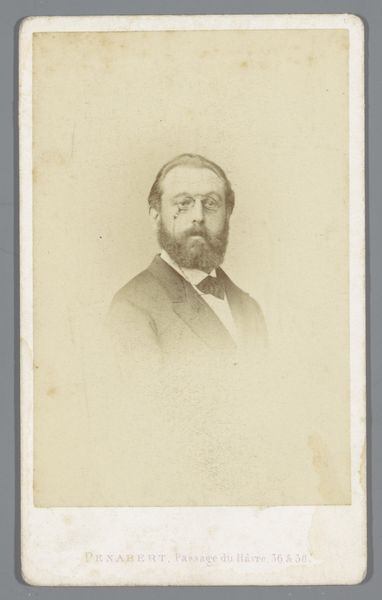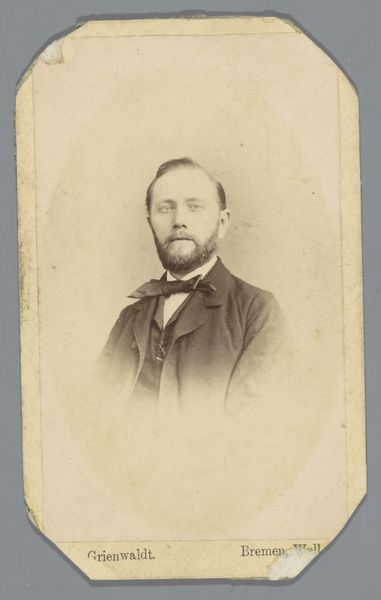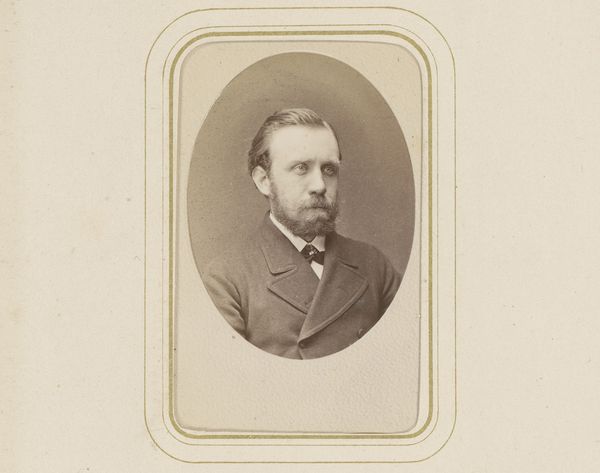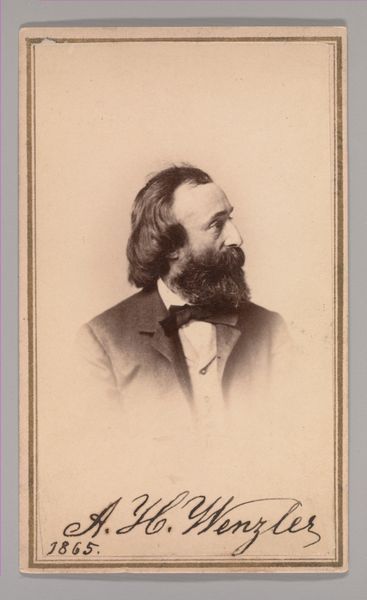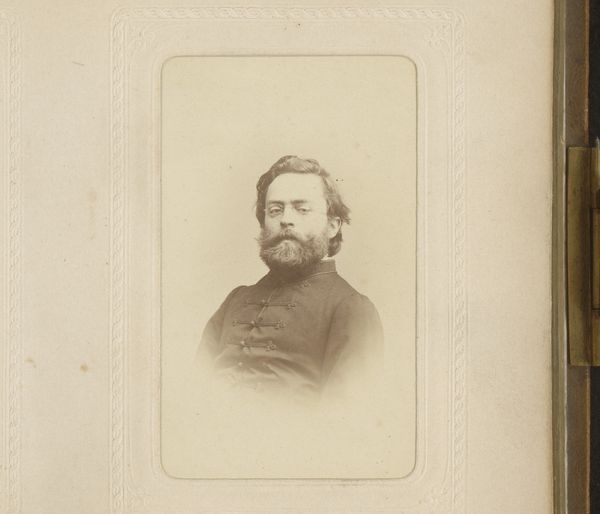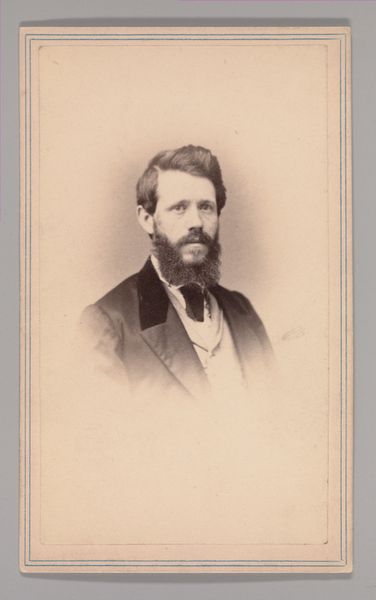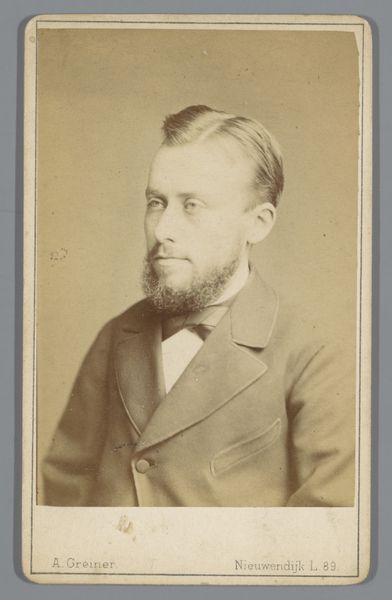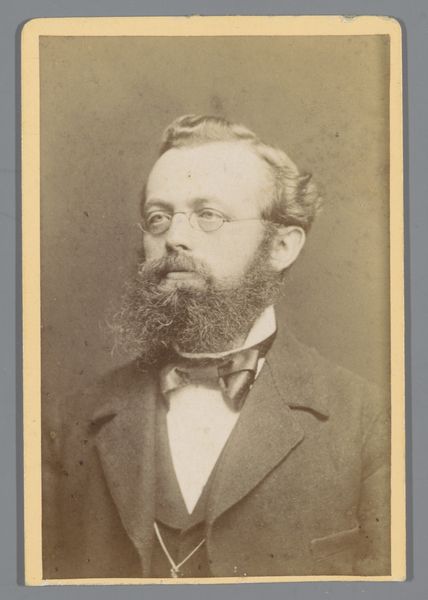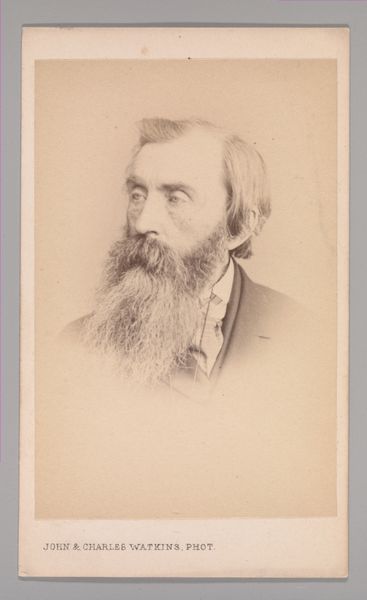![[William Jacob Hays, Sr.] by Whitney & Paradise](/_next/image?url=https%3A%2F%2Fd2w8kbdekdi1gv.cloudfront.net%2FeyJidWNrZXQiOiAiYXJ0ZXJhLWltYWdlcy1idWNrZXQiLCAia2V5IjogImFydHdvcmtzLzE5ZjEwNzg5LTg0MjgtNGY4OC05NDY4LTVkNmU4OTg5MTFjMy8xOWYxMDc4OS04NDI4LTRmODgtOTQ2OC01ZDZlODk4OTExYzNfZnVsbC5qcGciLCAiZWRpdHMiOiB7InJlc2l6ZSI6IHsid2lkdGgiOiAxOTIwLCAiaGVpZ2h0IjogMTkyMCwgImZpdCI6ICJpbnNpZGUifX19&w=3840&q=75)
Dimensions: Approx. 10.2 x 6.3 cm (4 x 2 1/2 in.)
Copyright: Public Domain
Curator: We’re standing now before an 1860s daguerreotype, held in the collection of the Metropolitan Museum of Art. It's a portrait of William Jacob Hays, Sr. by Whitney & Paradise. Editor: There’s something incredibly intimate about it. Despite its small size, his gaze is intense and direct, making me feel like I'm encountering the man himself. Curator: Well, photography at this time had immense social and political implications, didn’t it? It democratized portraiture, offering the middle classes an affordable way to document and present themselves, challenging the dominance of painted portraiture previously reserved for the elite. This one showcases the visual strategies that began to legitimize photography as high art. Editor: Precisely, and even today, looking at Hays' image through an intersectional lens, I'm struck by the ways masculinity is performed and solidified through these photographic conventions. The serious demeanor, carefully groomed beard – they all speak to a very specific era of social norms and expectations for men, especially professionals like artists. What kind of space do images like this hold for contemporary reflections? Curator: That's a sharp observation. Considering its reception at the time, these photographic portraits gained prestige as markers of societal success. They populated commercial galleries and even became collectable ephemera demonstrating popular sentiment. How these photographs played within institutions such as The Met says a lot about art's relationship with cultural capital. Editor: Indeed. Even the studio name—Whitney & Paradise—suggests an elevated social sphere, doesn’t it? As for the photograph itself, what kind of conversations are sparked through seeing works like this re-emerge in modern institutional settings? There's clearly more than a little social power that courses through this photographic study, no? Curator: I completely agree, the ongoing interpretation of these images is an act of revisiting the narratives inscribed into social memory. It prompts questions about who is remembered, how, and by whom. Editor: I leave this photograph thinking about what aspects of masculinity endure and transform, and how photographs construct the past we thought we knew.
Comments
No comments
Be the first to comment and join the conversation on the ultimate creative platform.
